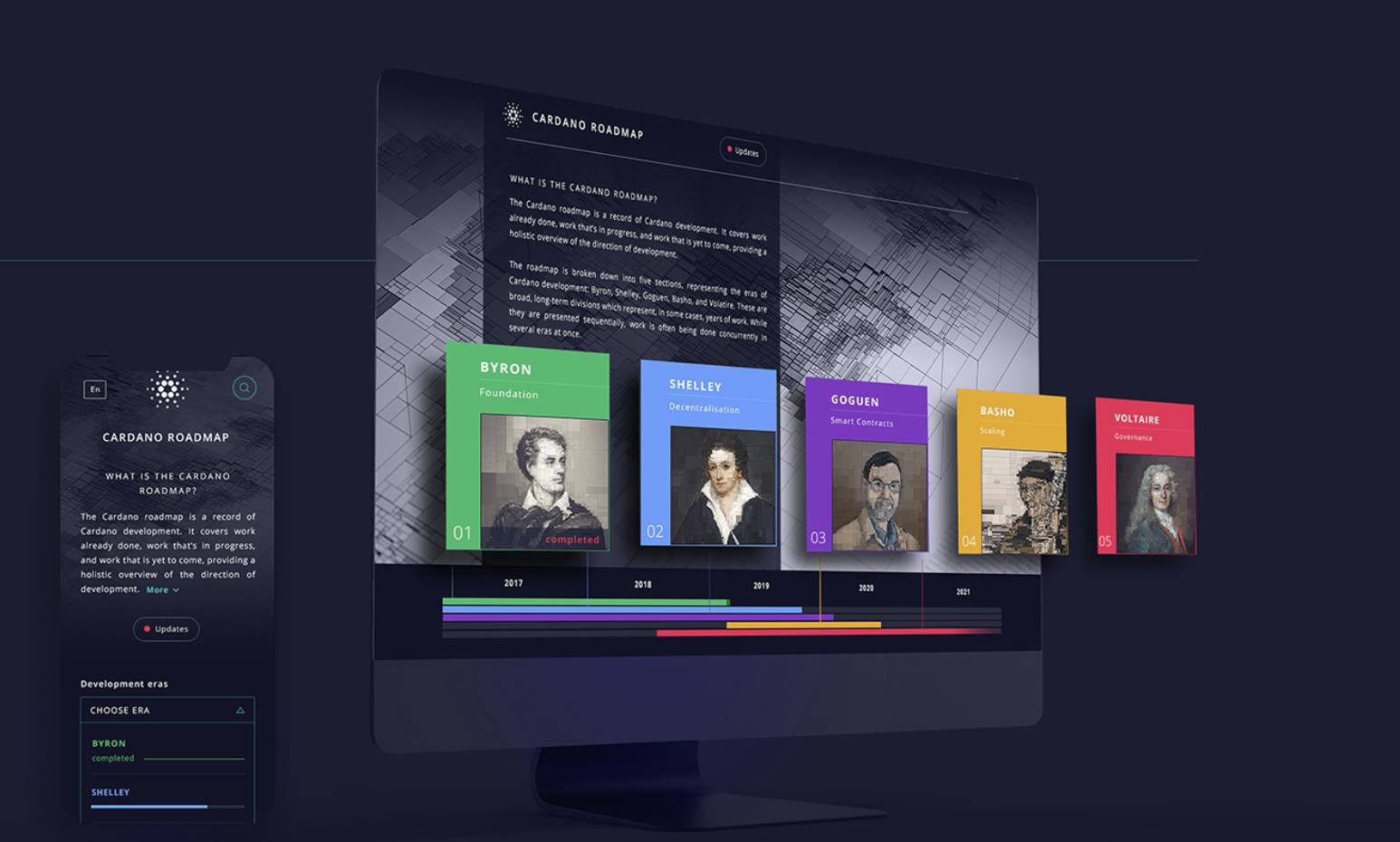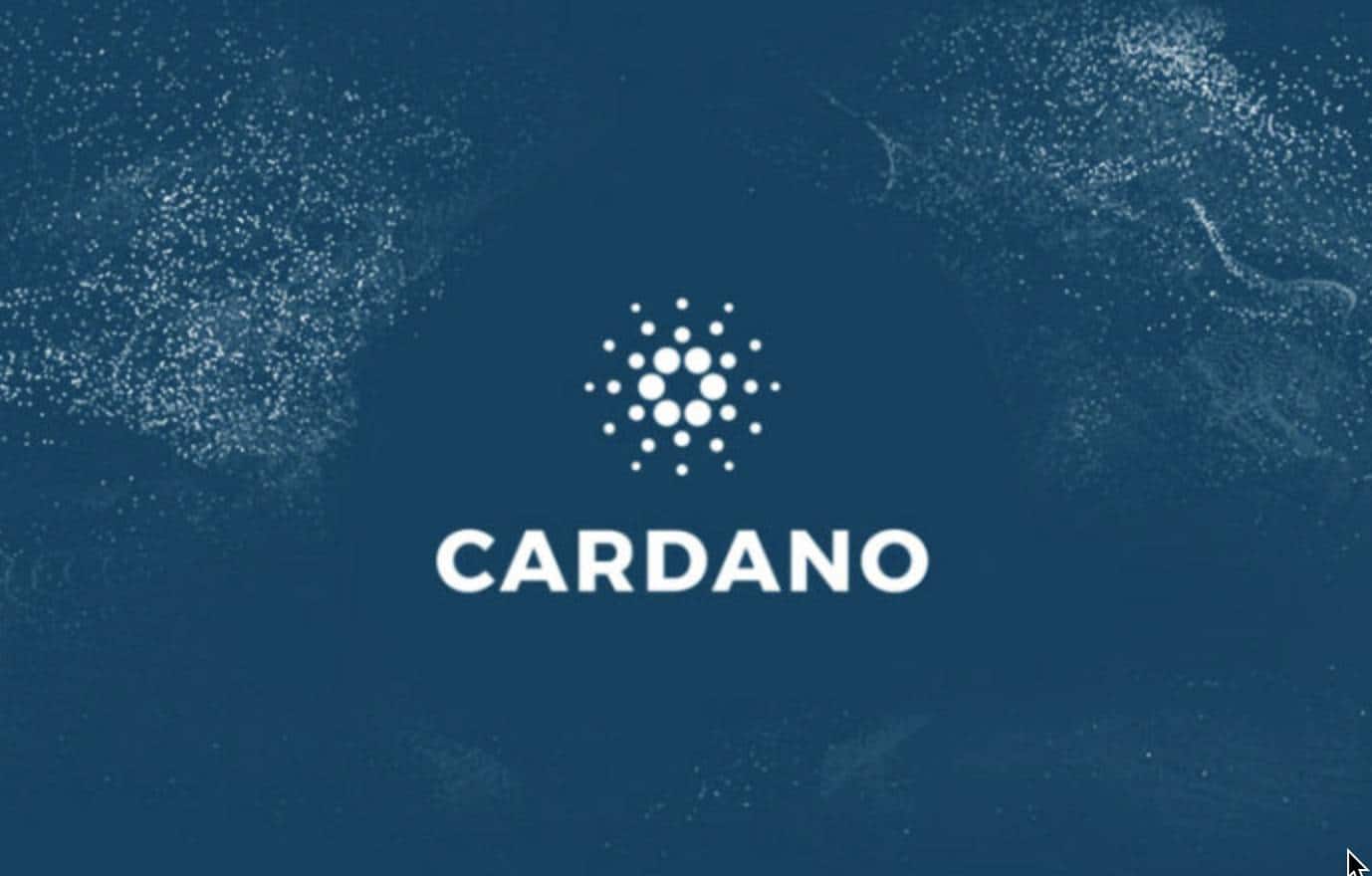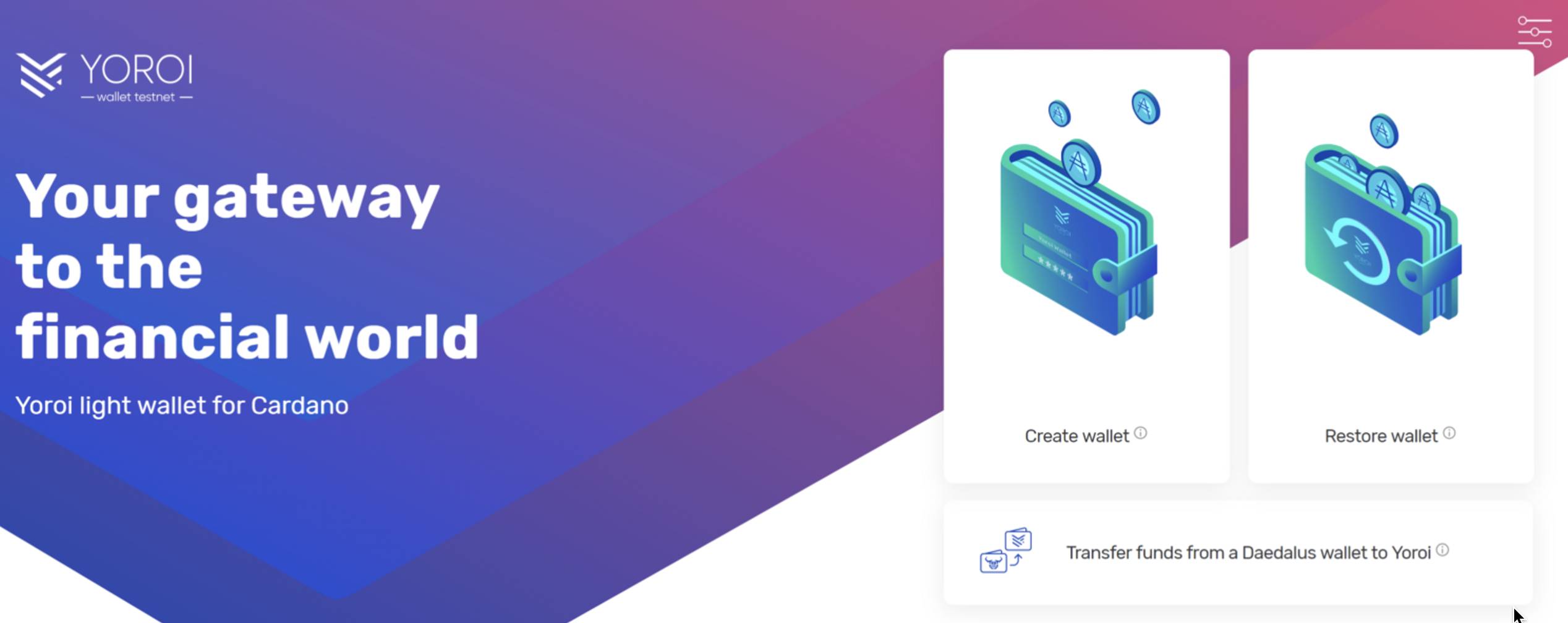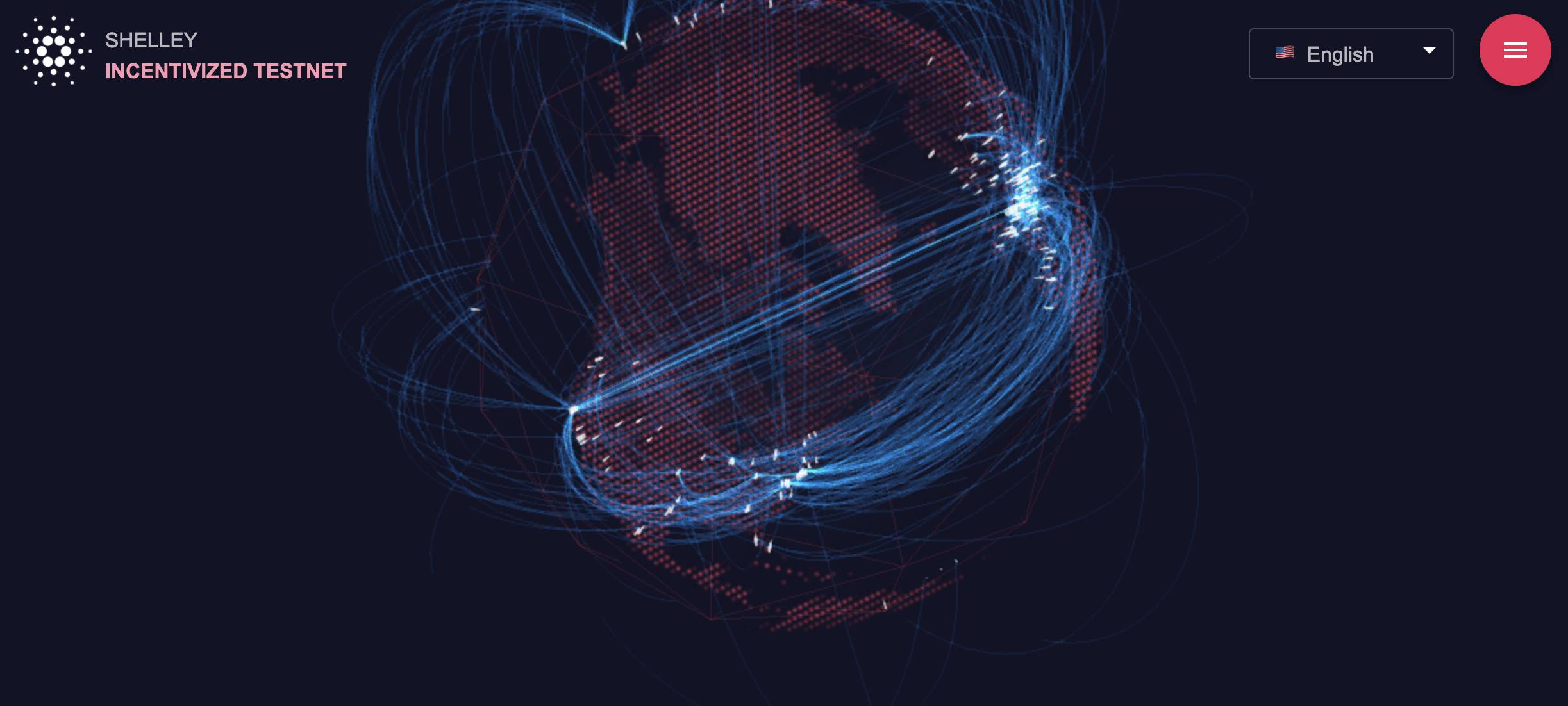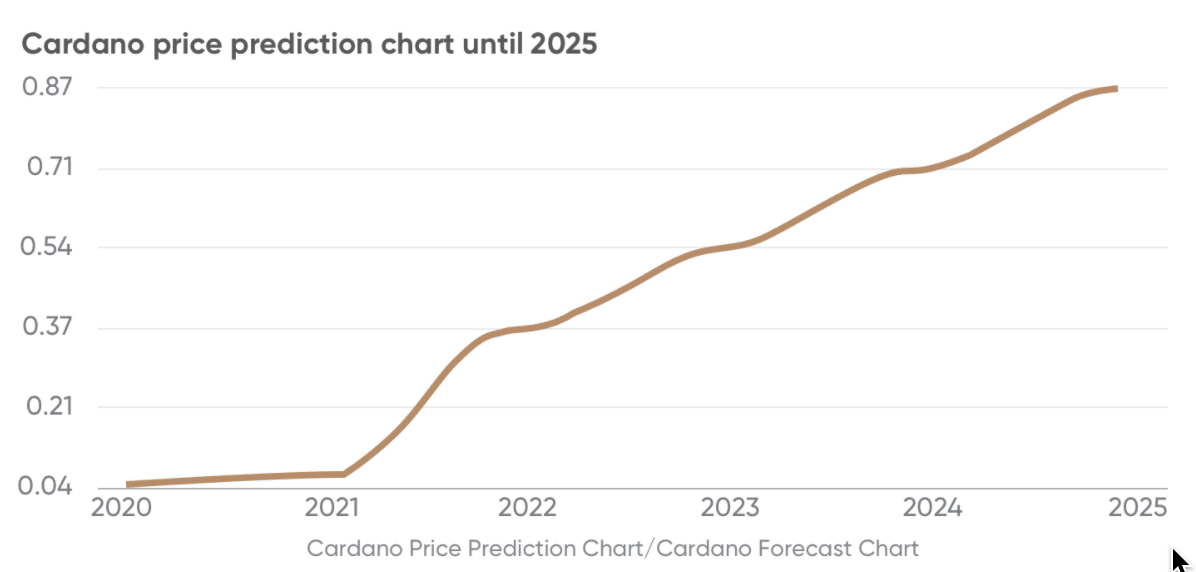What is Cardano Ada?
The Cardano cryptocurrency is powered by Ada digital currency which fuels the Cardano platform and is considered third-generation technology in the Blockchain world as Bitcoin and Ethereum were first and second generations respectively.
Cardano is a decentralized, blockchain-based smart contract system, similar to Ethereum but with more scalability, sustainability, and interoperability. It has layered architecture; where it has a separate layer that runs ADA coin for exchanging digital funds, and a separate one for the usage of Smart Contracts.
Cardano provides a more sustainable ecosystem to improve the shortcomings of Bitcoin and Ethereum with its separate layered architecture. Cardano is the first cryptocurrency that builds on a scientific peer-reviewed search that ensures its safety.
What does IOHK mean?
IOHK stands for Input Output Hong Kong and it is a research and development company that build more accessible financial services for blockchain with peer-reviewed research and innovation. It is one of those organizations which work to develop and take care of the Cardano platform. In 2015, Charles Hoskinson (Co-founder of Ethereum) and Jeremy Wood, found IOHK and their main function is to “standardize, protect, and promote the Cardano Protocol technology”.
IOHK team of expert engineers and researchers from around the world started by reviewing the concept of a cryptocurrency and they merged Proof of Stake algorithm named Ouroboros, and this approach was a first-principles approach based on proper peer-reviewed academic research study to build Cardano platform.
Where is Cardano based?
Cardano Foundation is the base entity for building Cardano based in Switzerland. It has two contributing parties in the development of Cardano that are IOHK, and Emurgo. Cardano foundation has a vision for the protection and promotion of Cardano according to the users and community of the protocol. They work with the collaboration of IOHK with the contract to design and build Cardano and Emurgo. These three entities are wholly separate in ownership and leadership but work on the same project.
Cardano Roadmap
The Cardano roadmap is organized into five eras:
- Byron
- Shelley
- Goguen
- Basho
- and Voltaire
These eras provide a summary of Cardano development and a certain set of functionalities are developed in each era that are delivered across multiple code releases.
The story of Cardano began in 2015 for addressing the three strategic challenges that were present in all previous blockchain networks such as scalability, interoperability, and sustainability. The first version of Cardano started in September 2017, and the Byron era began which is the foundation of Cardano.
Following the Byron era, the Shelley era of Cardano known as Decentralization, in short, is a period of growth and development for the network. Shelley was designed to achieve a smoother and risk-free transition without any service interruptions.
The Shelley era was a natural maturation era of the network for making it more useful, valuable, and rewarding for all kinds of users and preparing for a better and secure future.
The Goguen era known as Smart Contracts performs a big step forward for improving the capability for the Cardano network with Smart Contracts. Goguen adds the ability to build decentralized applications (DApps) with Smart Contracts on Cardano’s foundation of peer-reviewed research.
The Basho era of Cardano is known as scaling, in short, is the era of optimization, improving the scalability and interoperability of the network. This era is a big step in the sequence as with the previous decentralization and functionalities of eras, Basho focused on improving the underlying performance of the Cardano network that is the improvement in scalability to provide better growth and adoption for applications with more transaction volume.
The Voltaire era of Cardano is the Governance era and it will provide the final pieces required for the Cardano network to become a self-sustaining system. In this era, voting and treasury system will be introduced where network participants will have their stake and voting rights to encourage the future development of the network.
Cardano Proof of Stake
The Cardano network uses the Ouroboros Proof of Stake (PoS) algorithm that is the fundamental part of the protocol. It defines the way of nodes to reach consensus about the state of the ledger to build new blocks in the network.
Ouroboros is a unique protocol as it is the first proof-of-stake blockchain protocol that is based on formal and peer-reviewed research.
The most important reason to use the Proof of Stake (PoS) algorithm over a Proof of Work (PoW) algorithm is the excessive energy consumption in PoW.
Proof of Stake is a unique approach for block generation. The main idea of Proof of Stake is that instead of wasting electricity on solving complex puzzles by all nodes, a node is selected to generate a new block that has a large amount of coins. If a node has positive coins in its stake, it is called a “stakeholder”. If a node is eventually chosen to generate a new block, then it is called a “slot leader”.
Is Cardano open source?
Cardano is a completely open-source and patent-free blockchain network based on Proof-of-Stake (PoS) algorithm. This is the most complete and useful cryptocurrency ever constructed with proper peer-reviewed research and engineered collaboration. It uses the UTXO (Unspent Transaction Output) model for the support of smart contracts, but it is not optimal for the support of smart contract functionality.
However, to address this issue of the UTXO model, Cardano plans to release an upgraded version of UTXO, called Extended UTXO (EUTXO) which is currently under development. EUTXO has such mechanisms to split the execution of smart contracts into multiple transactions to make it more fast and efficient.
Cardano Price
Cardano became very popular just after its launch and was in the list of most top cryptocurrency exchanges very quickly. The price of Cardano was $0.021 at the time of launch and increased to $1.22 on 4th January 2018. Market capitalization of Cardano grew from $0.56 million to $31 billion in just 3 months.
Investors bought Cardano because it offers solid technological improvements over other cryptocurrencies.
The current price of Cardano is 0.033 and the market cap is 0.1073. The 7d Low and High prices are $0.03316458 and $0.03623875 with market cap rank 13. Cardano value can be viewed from the top cryptocurrency exchanges such as Binance, Bitfinex, Bitstamp, Coinbase, HitBTC, Kraken, and Okex. There are two graphs where the first graph is showing the price of Cardano from 2018-2020 the second is to show only the price of the latest week from Apr 9, 2020, to Apr 14, 2020.
Source https://cointelegraph.com/ada-price-index
Cardano Shelley release date
Cardano Shelley was expected to release at the end of February 2020 but the final version is not still released as the second month of the year has ended and Shelley remained in testnet mode.
In a video update, Hoskinson said that when the Byron will reboot and the release of the Shelley testnet are completed successfully, then the company will be able to confidently set a release date.
Hoskinson explained that the company is still not 100 percent sure about launching it smoothly. He said that company is currently around 75 percent confident about its release within the next two months. However, the 25 percent chance of risk for a successful launch is too high for the company to go through with announcing a release date and it must be 100 percent at the time of release.
What is the best Cardano Wallet?
Cardano wallets are used for securing your multiple assets with hardware wallets. Several wallets are considered best such as Ledger Nano S, Daedalus, Binance, AdaLite, Yoroi, and Inifinito. Ledger Nano S is the best among all hardware wallets, which are considered to be the most secure in the cryptocurrency market. Ledger Nano S is better than the previous Ledger Nano X as it offers a wider functionality for less money.
Like other wallets, Ledger Nano S allows us to manage seed phrases, set a PIN code or a password. Also, it supports more than 1000 cryptocurrencies tokens on it, including Cardano. It is a bit costly as compared to the other hardware wallets and can be used at ease.
What is the Yoroi Wallet?
Yoroi is a light wallet for Cardano and it doesn’t need to download or synchronize the blockchain like the Daedalus wallet. Once you open the wallet, you can send or verify the response of transactions accurately.
This wallet is developed by Emurgo and engineered by IOHK, official representatives of the Cardano project and it is considered as the official wallet of Cardano.
Yoroi is a light, hierarchical deterministic (HD) wallet for Ada (cryptocurrency) that runs as a Chrome and Firefox extensions, as an Android and iOS app. It is simple and secure which follows best practices for software in the industry with a comprehensive security audit.
In Yoroi, private keys are stored encrypted on the user’s machine automatically. It is very user-friendly and doesn’t need much space. It supports Trezor and Ledger hardware wallets such as Trezor-T, Nano S, ad Nano X.
How does Cardano Staking work?
As we mentioned earlier that Cardano utilizes a proof of stake algorithm known as ‘Ouroboros’, which is the mechanism that defines how individual nodes reach consensus for generating new blocks in the ledger. Here is step by step Cardano staking procedure:
- Stakeholders and Slot Leaders
A node is selected to generate a new block based on their relative stake of coins, the more coins a node has, and the more chances it has to become a clot leader. Nodes that have some coins in their stake are known as stakeholders and the node that is selected for new block generation becomes slot leader.
- Epochs and Slots
With the Ouroboros consensus protocol, time is divided into ‘epochs’ and each epoch is subdivided into ‘slots’ and in each slot, there is only one slot leader to validate the block. If a slot leader fails to validate a block because of any inactivity, they will lose the right to become a slot leader, then they will have to be elected again.
- Elections of Slot Leader
The slot leaders are elected based on their stake volume of plays a vital role in the Ouroboros protocol. The nodes have 2% of the total stake are eligible to become stakeholder nodes, these groups of nodes are known as electors and then they have a chance to be elected as a slot leader. The stakeholders in Cardano staking with more stake volume has a higher chance of being elected as a slot leader.
- Reward Scheme
Cardano staking also have a reward system for slot leaders as they invest their computational resources to generate new blocks. According to the Cardano road map, the incentive scheme that will be a part of Ouroboros protocol is still in the review stage. The stage will be implemented into code after its complete testing.
Can I stake Cardano?
Cardano is currently on the road to Shelley testnet and an upgrade will introduce staking for the first time with the Oroborous Genesis consensus mechanism of Cardano network. The Shelley era contains the critical early steps in decentralization and the staking of Cardano’s journey.
They will improve gradually but significantly. In the Shelley era, more nodes will shift towards the Cardano community with staking and decentralization.
Shelley will also introduce a reward system to motivate stake pools and community adoption. As a proof-of-stake network, users will stake their ADA to participate in the network.
Is Cardano Staking live?
The Shelley incentivized testnet is live available for live staking. This testnet is designed to test live incentivization and allow users to become Ada holders for earning rewards by running a stake pool and delegating the stake.
Shelley mainnet was expected to go live in early 2020 but it is still in the testing process and after its successful launch, live staking will be available to all users.
When live testnet was performed for 24 hours, Cardano (ADA) holders have staked more than 5 billion Ada coins. According to Shelley’s roadmap, IOHK is about to reach its target of 1,000 staking pools.
ADA holders are waiting for the launch of Cardano’s Shelley incentivized testnet for live staking in which participating users will be able to earn real ADA rewards.
How can I stake Cardano?
Staking on Cardano platform is just like any other staking system. Staking in Cardano is the process by which validators for the generation of new blocks are selected based on proof of stake algorithm. If you have a Cardano Ada and decide to stake it, you’ll get a return on your investment in the form of reward earning.
Staking process also helps the network as the network has more block generators for new blocks generation. But if you don’t want to validate a block, you can follow a simple process by giving your tokens to a staking pool.
Cardano does not allow solo staking like Ethereum and it ensures that the network of Cardano validators remains updated with more validator nodes as it is mandatory to maintain a successful network.
Cardano Ada Staking Pools
Cardano staking pools can combine their pool users with their collective staking powers to participate in staking as a larger entity. It is a group of dedicated people who are always online to get maximum chances to become a slot leader after successful staking.
When a pool member is selected as a slot leader and get a reward after successful block generation, that reward is distributed among all the member of staking pool. The owner of the staking pool gets a bonus as a reward as he has is the manager and operator of the pool. There is no limitation of Ada coins to become a pool member, but if someone wants to become a pool owner he as to pay some extra transaction charges.
What is a Cardano Node?
A Cardano node is comprised of the Integration of the ledger, consensus, networking, and node shell repositories. Logging is provided as a separate feature by the node shell to the other packages.
The node does not include wallet or explorer functionality. These two functionalities are performed as separate components, and separate external processes are used to run them and they communicate with the node through local IPC.
Cardano Passive Income
Many people want to use the Cardano network but they are afraid of the technical side of things. To accommodate those people, Cardano provides the opportunity of earning passive income through the stake delegation process. Once Shelley will be launched hopefully in the next two months, you will be able to delegate your stake and earn block rewards which will be your passive income without locking up your Ada.
The process of delegating your stake is more convenient than ever. If you already have an Ada wallet, you will be able to easily delegate your funds to your chosen stake pool. Your ability to spend your funds is not affected as you have total flexibility to undelegate or redelegate at any time or move your delegated funds between stake pools. Cardano’s incentive mechanism is unique, and the Shelley will have a great and positive impact on the crypto world with more passive income for its users.
Cardano Staking Rewards Calculator
The staking reward calculator only provides a rough estimate with a prediction of rewards over a long time. The actual amount of Ada coins may vary and will depend on various factors such as on the performance of the stake pool, which is the actual number of blocks produced by a stake pool in a given epoch compared with the number it was expected to produce in that given time. Any kind of changes to network parameters may also affect rewards, as IOHK adjusts the network as part of their testing process.
The annual returns given by this calculator assume that stake is delegated to the same stake pool for 365 days as this is only an assumption and that stake pool performance is assumed consistent over that timeframe. IOHK has no responsibility for any difference between estimated and actual rewards value as this calculator is provided for the user’s guidance and estimation only.
How do you buy Cardano?
You can buy Cardano in three simple steps
- Choose a Cardano Wallet
If you are looking for a secure solution to store your Ada with security then you can choose hardware wallets such as AdaLite, Nano X, and Nano S. Daedalus is also required to install which is an official Cardano desktop wallet and it can be downloaded from its official website. It’s an open-source cryptocurrency wallet for ADA.
Once you have your Cardano wallet, now you have to locate your ADA address. It’s a very long string of letters and characters that must start with a capital letter “D”.
- Buy Ada through any Cryptocurrency Exchange
You can buy Cardano Ada form various cryptocurrency exchanges but eToro is the easiest way as it gives you the option of buying and selling coins at different coins and it supports PayPal or credit card as payment methods.
- Withdraw Ada to your wallet
When you finally bought Ada and now you have to move the coins to your non-custodial wallet. When the coin is reached in your wallet, you have successfully bought Cardano.
Cardano Price Prediction 2020
Cardano has become the more successful blockchain network with its incredible entry into the cryptocurrency market. However, the crypto market is moving rapidly and the prediction of future Cardano prices is a little bit difficult. To bring some clarity, there are a number of the latest ADA price predictions 2020 and beyond taken from various sources. According to a technical prediction of Longforecast.com, the ADA coin price is predicted $0.054 for December 2020. 2020 will prove one of the luckiest years for Cardano where the price is expected to increase gradually. Here is a prediction picture with monthly detail which shows a gradual increase in Cardano price.
https://capital.com/cardano-price-prediction-2020
Cardano Price Prediction 2025
In the next 5 years or more, Cardano will achieve greater victory as they have dedicated partnerships and integrations planned to encourage more companies and people to have the Cardano platform. This encouragement is going to impact positively for Cardano price increment in the long run. The growth rate is expected to continue with the coin trading at $0.8792 in 2025.
https://capital.com/cardano-price-prediction-2020
Cardano Price Prediction 2030
If everything will go according to the Cardano road map successfully then 2030 would be the most successful year for Cardano with higher Ada prices. With the actual functioning of Cardano could dominate the DApps platforms sector in cryptocurrencies. It is hard to predict to put a number for Ada price in 2030 but it is certainly expected to reach $10+ per token.
Cardano Partnerships
The development of Cardano is the collaborative effort and research of the Cardano Foundation, IOHK, and Emurgo. They are also currently participating in a consortium that is formed by outstanding entities and companies from the European Union. This consortium includes Priviledge, University of Tartu and Edinburgh or the Technological University of Eindhoven, as well as companies IBM or GuardTime.
Cardano was the first blockchain platform that is based on a scientific philosophy and a large part of its development is done with the participation of most prestigious technological universities with their valuable academic research work.
The World Economic Forum in Davos was very supportive of Cardano, as it secured the alliance of two major players, ScanTrust and Berkman Klein Center. ScanTrust will provide security solutions and Berkman Klein Center which belongs to Harvard University will support the research on decentralized governance.
Gen Two AG is another recent prominent partner of Cardano. They are going to launch a new financial product to the market using Cardano blockchain. Cardano has also entered into a partnership with the government entities of Uzbekistan, with the help of Emurgo for the consultancy services to the government and the development of new projects using blockchain technology.


